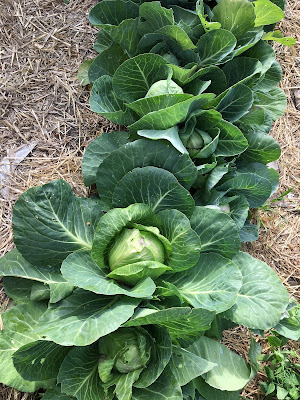Last year I tried and failed horribly at making sauerkraut. My beautiful homegrown cabbage that was fermenting in a salt brine on the counter turned into a terrifying science project with white mold growing on top of gray, smelly, soggy-looking cabbage. The jar of yuck turned so horrible that I tossed it into the compost pile and figured I'd never give home fermentation a try again. Then I started reading a book about fermentation that a friend gave me for my birthday last year, Fermented Vegetables: Creative Recipes for Fermenting 64 Vegetables & Herbs in Krauts, Kimchis, Brined Pickles, Chutneys, Relishes & Pastes by Kirsten and Christopher Shockey.
After giving it significant consideration, I decided fermentation was worth another try. After all, fermented foods (when properly prepared and not moldy science projects) have enormous health benefits from the probiotics they contain, which promotes healthy digestive and immune systems. A strong immune system is something all of us need right now during this pandemic. To have a more successful outcome with home fermentation, I decided to try using airtight fermentation lids on top of the jars. The set of lids that I ordered came from Jillmo and they are BPA-free. The kit arrived in the mail today.
The fermentation kit has four lids that fit on wide-mouth mason jars. Since the lids are air-tight, they should prevent mold from growing inside the jars as the veggies ferment.
Most of the cabbage in my garden is ready to harvest. I can't wait to try making sauerkraut again. Since I can make 4 jars of fermented veggies at one time, I am thinking about making kimchi as well.
I also noticed the cauliflower is nearly ready to harvest. Maybe I should try fermenting something with cauliflower?



Comments
Post a Comment
Thank you so much for submitting a comment! All comments are reviewed by our moderator before being posted to the blog, in an effort to help control spam.